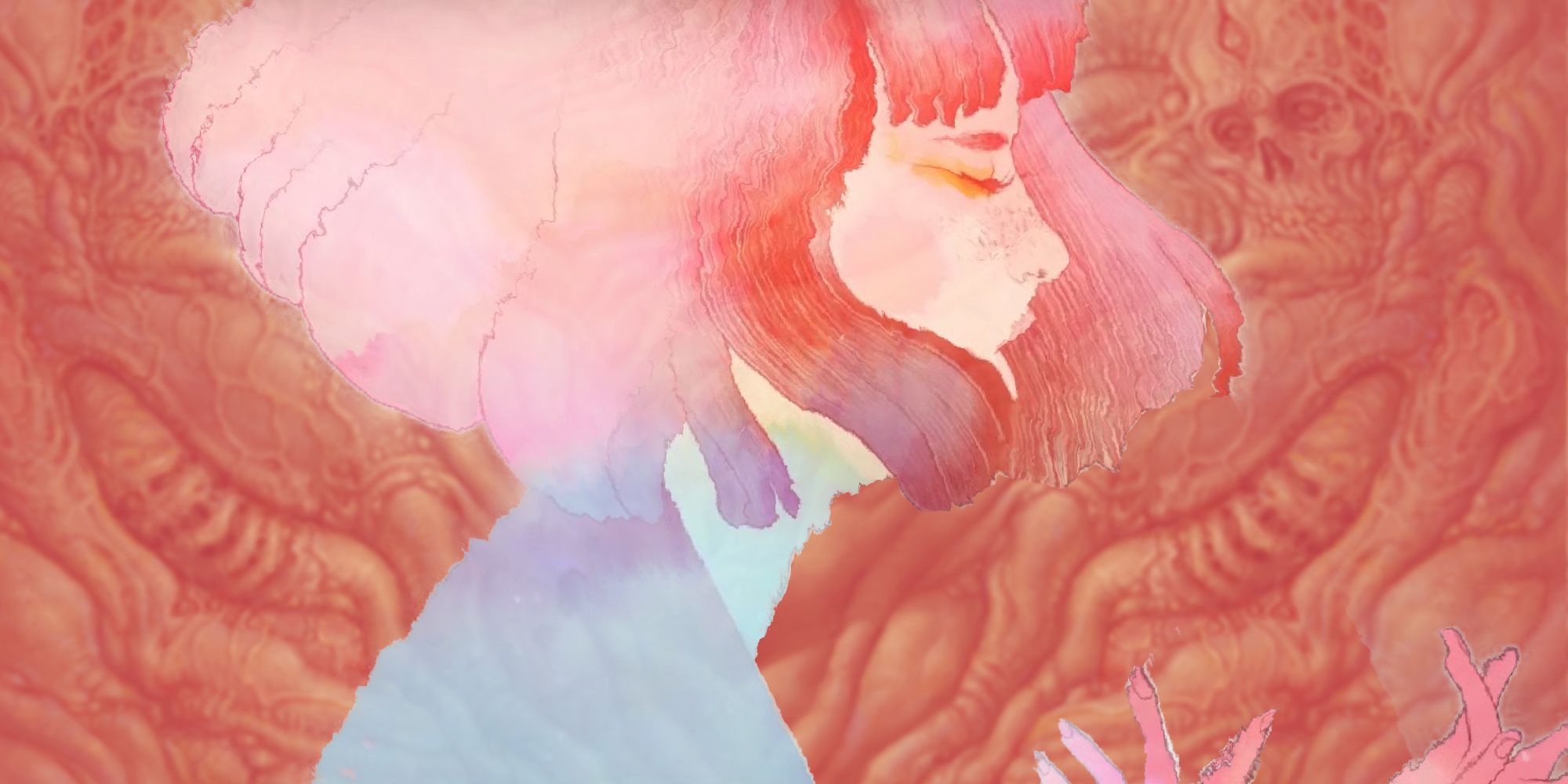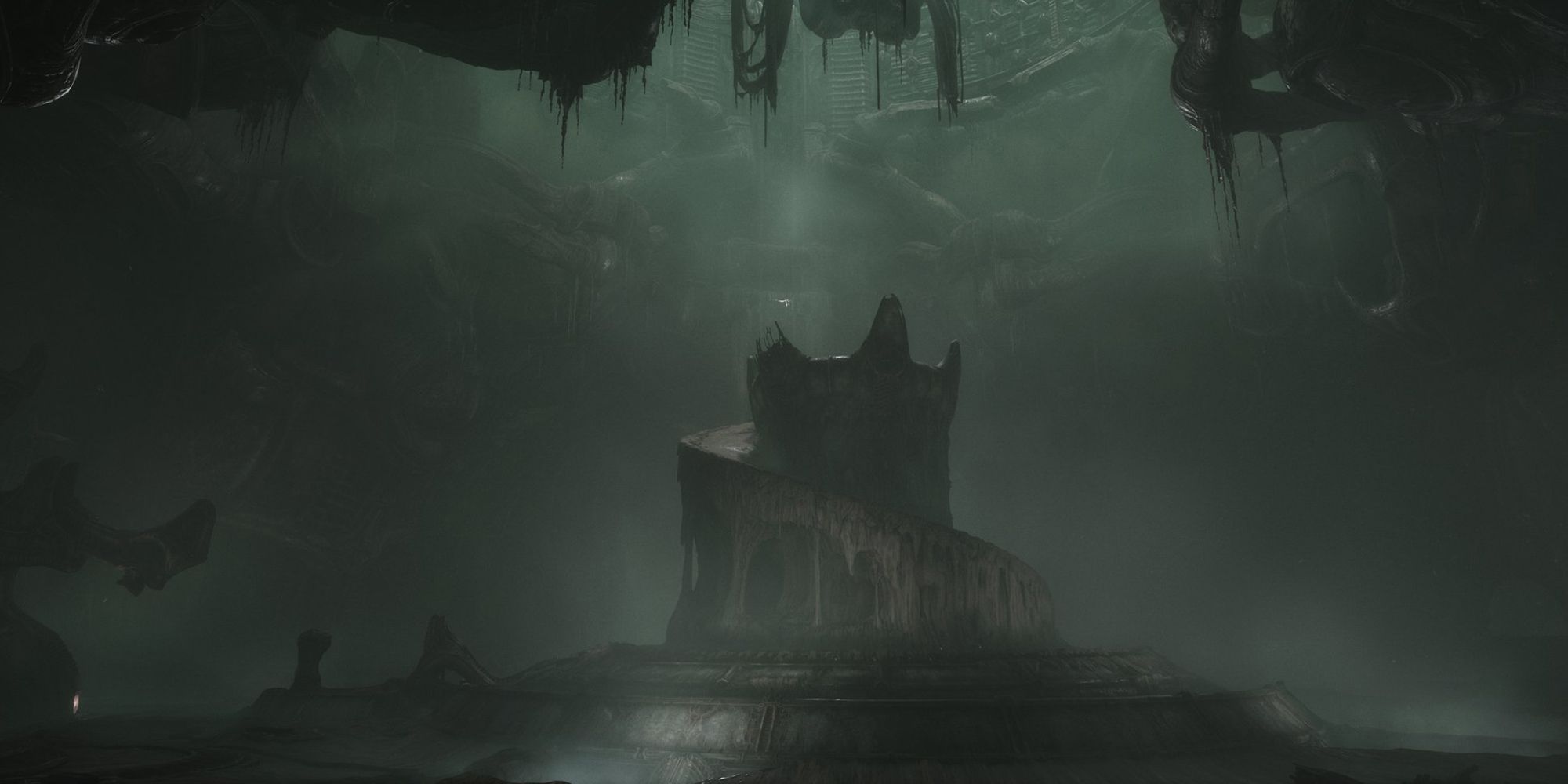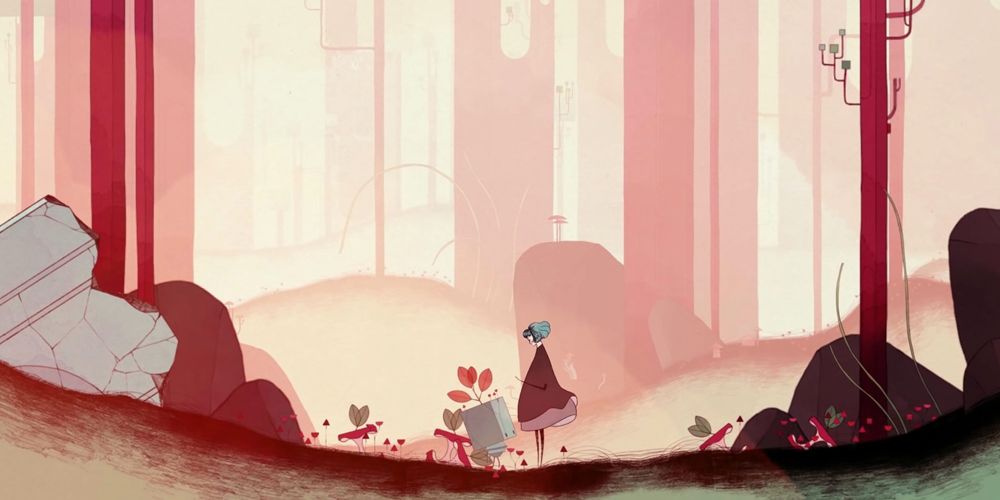Environmental storytelling is something of a hot topic in games. The highly divisive Scorn launched recently, its gameplay notable not only for the way it drips with grotesquely erotic viscera, but also for the fact it contains no spoken dialogue nor text on the screen. The entire story Scorn tells, it does so through how you move through the environment and react to it. The storytelling needs to be earned, explored, examined. There is no 'right' way to interpret it. Despite everything else about the game being vastly different, it reminded me of Gris.
When we talk of environmental storytelling in video games, we usually think of it in smaller terms. We think of slogans spray-painted onto buildings, of dead bodies rotting, of broken windows or other signs of a struggle. Sometimes, environmental storytelling affects us without us realising. It might make us feel more tense, or encourage us (prematurely or not) to let our guard down. Other times it's almost insultingly obvious, like seeing CUT OFF THEIR LIMBS scrawled in blood on a wall. But even in games that apply environmental storytelling liberally, there's still an underlying story there for you. The bulk of the story is still carried in the traditional sense, by dialogue, cutscenes, and cinematic action.
Not so for Gris and Scorn. However, Scorn seems to relish in its refusal to be defined. It opens with the game's worst and most convoluted puzzle, and constantly throws upsetting imagery at you as it squelches its way deeper into complexity. Gris is far more open. It operates on a 2D plane and while you will explore left, right, up, and down across your journey, there is no difficulty in understanding where to go next. Its soft and pastel colour palette is also far more welcoming and tranquil too, and seems to open itself up to interpretation.
While Scorn arms itself with extremely loaded imagery, it seems to mock those who do not understand it, which only heightens the suggestion that it might not be about anything besides shocking us. Gris, meanwhile, offers a more contemplative audience the chance to grapple with its themes and table their own, personal suggestions. Gris wants you to look at the painting, listen to the music, read the poetry, and tell us how it makes you feel. Scorn, however, feels as though it demands specific knowledge, applied via specific techniques, with the answer submitted in the form of a thoroughly cross-referenced essay.
Gris is a far more simple story - a girl tries to sing, is unable to, and wanders through a variety of minimalist, gorgeous landscapes in order to get her voice back, all while being chased by a black and toxic ooze. The platforming is fairly straightforward but you're unable to look away from the scenery in front of you, and that elevates the whole experience. It takes universal imagery (feeling isolated, losing something important, being chased by fears) and applies them in ways that are both relatable and specific. It's all brilliantly stripped back in ways that make you feel like you are being asked to give part of yourself to understand it, not to find something new to complete the puzzle.
Both Scorn and Gris present an empty world filled with a very specific artstyle, and leave the interpretation of the story up to you. The only difference is in Gris there are no wrong answers and in Scorn, there are no right ones.



